Animals That End With E
Read below for information on 85 unlike animals that commencement with the letter E, from eagles to emu. The well-nigh popular is the emperor penguin, the largest penguin species on earth. The to the lowest degree pop is the edible frog, also known as the common h2o frog. Some fun facts about E name animals include:
- Elephant seals are the largest seal species in the world
- Electric Eels tin can generate up to a 500 volt electric stupor
- Elephants can spend as many as 22 hours a day eating nutrient
Jump to any letter
Alphabetical List of Animals That Start with E
- Eagle
- Earless Monitor Cadger
- Earthworm
- Earwig
- Eastern Barred Bandicoot
- Eastern Bluebird
- Eastern Box Turtle
- Eastern Brown Snake
- Eastern Chipmunk
- Eastern Coral Serpent
- Eastern Diamondback Rattlesnake
- Eastern Dobsonfly
- Eastern Fence Lizard
- Eastern Glass Lizard
- Eastern Gorilla
- Eastern Grey Squirrel
- Eastern Light-green Mamba
- Eastern Hognose Serpent
- Eastern Indigo Snake
- Eastern Lowland Gorilla
- Eastern Meadowlark
- Eastern Phoebe
- Eastern Racer
- Eastern Rat snake
- Eastern Turkey (Wild Turkey)
- Eastern Woodrat
- Echidna
- Eclectus Parrot
- Edible Frog
- Eel
- Egyptian Cobra (Egyptian Asp)
- Egyptian Goose
- Egyptian Mau
- Egyptian Tortoise
- Egyptian Vulture
- Eland
- Elasmosaurus
- Elasmotherium
- Electrical Catfish
- Electric Eel
- Elegant Tern
- Elephant
- Elephant Beetle
- Elephant Seal
- Elephant Shrew
- Elf Owl
- Elk
- Emerald Tree Boa
- Emerald Tree Monitor
- Emperor Penguin
- Emperor Tamarin
- Emu
- English Bulldog
- English Cocker Spaniel
- English Foam Golden Retriever
- English Foxhound
- English language Pointer
- English Setter
- English Shepherd
- English Springer Spaniel
- Entlebucher Mountain Canis familiaris
- Epagneul Pont Audemer
- Equatorial Spitting Cobra
- Ermine
- Escolar
- Eskimo Domestic dog
- Eskipoo
- Estrela Mountain Dog
- Euoplocephalus
- Eurasian Beaver
- Eurasian Collared Dove
- Eurasian Jay
- Eurasian Lynx
- Eurasian Nuthatch
- Eurasian Wolf
- European Bee-Eater
- European Corn Borer
- European Polecat
- European Robin
- European Starling
- European Mutiny
- Evening Bat
- Evening Grosbeak
- Executioner Wasp
- Eyelash Viper
Animals that First with E
Eagle

- Kingdom
- Animalia
- Phylum
- Chordata
- Form
- Aves
- Gild
- Falconiformes
- Family unit
- Accipitridae
Fun Fact: Has exceptional eyesight!
The sharp-eyed hawkeye is among the most fearsome predators of the animal kingdom. Nicknamed the "king of all birds," eagles are large and powerful birds of prey that appear to soar majestically in the air, searching for their next meal. Although not the most agile flyer, its remarkable speed in the air certainly belies its […] Read More
Earless Monitor Lizard
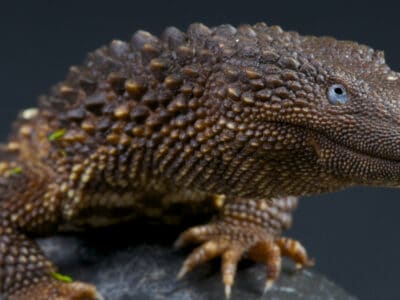
- Kingdom
- Animalia
- Phylum
- Chordata
- Class
- Reptilia
- Order
- Squamata
- Family
- Lanthanotidae
- Genus
- Lanthanotus
- Scientific Proper noun
- Lanthanotus borneensis
Fun Fact: These lizards can practically shut downwards their metabolism and appear comatose for long periods.
The endangered earless monitor lizard, found only on the island of Borneo, is now threatened past illegal pet trading. Few animals are equally elusive equally the endangered earless monitor lizard, native only to the northwestern coastal region of the island of Kalimantan. This pocket-sized and unique lizard was first described in 1878 past Franz Steindachner. […] Read More
Earthworm
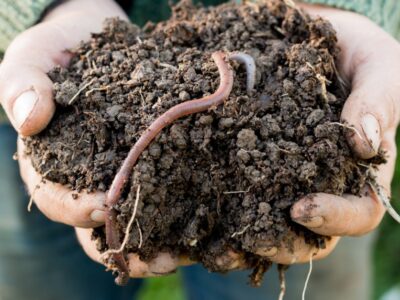
- Kingdom
- Animalia
- Phylum
- Annelida
- Form
- Clitellata
- Order
- Opisthopora
- Family unit
- Limbricidae
- Genus
- Lumbricus Linnaeus
- Scientific Proper noun
- Lumbricina
Fun Fact: They are hermaphrodites, which means they have male and female organs
"Powerful Niggling World Movers." Just as bees are crucial to pollinating flowers, earthworms are crucial to having those flowers grow in the outset place. These worms aerate the soil and permit oxygen, water, and nutrients to enter, which so enter the roots of the plants. Their castings also get nutrients into the soil, and they […] Read More than
Earwig

- Kingdom
- Animalia
- Phylum
- Arthropoda
- Grade
- Insecta
- Gild
- Dermaptera
Fun Fact: There are near ii,000 different species!
"No in ear problems with the Earwig!" Earwigs are nocturnal insects that can be identified past the large pair of pincers at the end of their bodies. Exterior, they're found under rocks, in rotted tree bawl, and in other moist places. Inside, they can be establish in the pantry, where they do eat foods that […] Read More than
Eastern Barred Bandicoot

- Kingdom
- Animalia
- Phylum
- Chordata
- Class
- Mammalia
- Order
- Peramelemorphia
- Family
- Peramelidae
- Genus
- Perameles
- Scientific Name
- Perameles gunnii
Fun Fact: Digs funnel-shaped holes in search of insects
"They can embrace iii feet of ground in a unmarried bound" Eastern barred bandicoots are omnivores with a diet of plants and insects. They take brownish or gray fur with three or four vertical night stripes on their hindquarters. On a distribution map, these mammals live in southeastern Australia and Tasmania. In the life cycle […] Read More than
Eastern Bluebird

- Kingdom
- Animalia
- Phylum
- Chordata
- Class
- Aves
- Guild
- Passeriformes
- Family
- Turdidae
- Genus
- Sialia
- Scientific Name
- Sialia sialis
Fun Fact: Bluebirds drop straight down on their prey from their perch, much like leopards.
"The Eastern Bluebird is the but bluebird institute east of the Rockies." These beautiful and dear lilliputian birds are considered harbingers of spring and in some places, their song can exist heard even when snow is all the same on the ground. Unlike so many other animals, their status is of least concern, and their numbers are […] Read More
Eastern Box Turtle
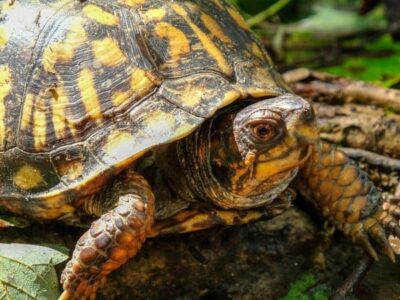
- Kingdom
- Animalia
- Phylum
- Chordata
- Class
- Reptilia
- Order
- Testudines
- Family
- Emydidae
- Genus
- Terrapene
- Scientific Proper name
- Terrapene carolina carolina
Fun Fact: When injured or damaged, the shell of the eastern box turtle can regenerate
When injured or damaged, the shell of the eastern box turtle can regenerate. Summary The eastern box turtle is a species of swivel-shelled turtle, also known as the box turtle. The eastern proper noun is credited to its habitat in the eastern part of the United states of america. Unlike many other species in the turtle family, eastern […] Read More than
Eastern Brown Serpent
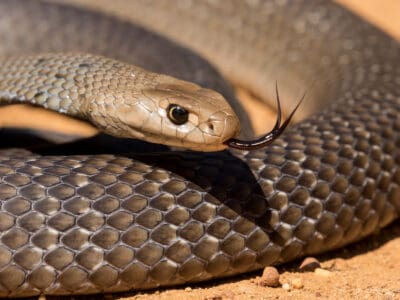
- Kingdom
- Animalia
- Phylum
- Chordata
- Class
- Reptilia
- Order
- Squamata
- Family
- Elapidae
- Genus
- Pseudonaja
- Scientific Name
- Pseudonaja textilis
Fun Fact:
The Eastern Brown Serpent is a slender, venomous snake native to Australia. It can strike with tremendous speed and evangelize a stiff dose of venom. Although it's a fairly common snake, encounters with humans are fortunately rare. v Fun Facts About the Eastern Brown Serpent • Its venom is classed as the almost toxic of […] Read More
Eastern Chipmunk

- Kingdom
- Animalia
- Phylum
- Chordata
- Grade
- Mammalia
- Social club
- Rodentia
- Family unit
- Sciuridae
- Genus
- Tamias
- Scientific Name
- Tamias striatus
Fun Fact: The proper noun chipmunk is derived from an Ojibwe word that means "one who descends the copse headfirst."
"The eastern chipmunk is the largest of the chipmunks!" To humans, chipmunks are small and cute. The eastern chipmunk is the largest of these cuddlesome rodents, and it tin be tamed and make a fairly good pet despite its short lifespan. The actress Elizabeth Taylor had a pet chipmunk and even wrote a book about […] Read More
Eastern Coral Serpent
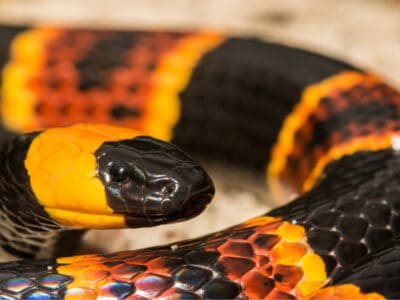
- Kingdom
- Animalia
- Phylum
- Chordata
- Class
- Reptilia
- Club
- Squamata
- Family
- Elapidae
- Genus
- Micrurus
- Scientific Name
- Micrurus fulvius
Fun Fact: One of the about dangerous snakes in the USA.
"The Eastern Coral Snake is described equally 'Beautiful and Unsafe'" Too chosen the harlequin ophidian, this slender, jewel-toned elapsid is one of the most cute in the U.s.a., with its bands of red, yellow, and black. Information technology'south also one of the most dangerous, every bit it produces a paralyzing neurotoxin. The adept news is that […] Read More
Eastern Diamondback Rattlesnake

- Kingdom
- Animalia
- Phylum
- Chordata
- Class
- Reptilia
- Order
- Squamata
- Family
- Viperidae
- Genus
- Crotalus
- Scientific Proper name
- C. adamanteus
Fun Fact: This is the biggest venomous ophidian in North America, with a few that reach 8 feet long.
The biggest venomous snake in Northward America is the Eastern Diamondback Rattlesnake. These snakes are big, heavy, and long. For such a big snake, they're difficult to spot in the wild because their colour and markings are superb camouflage. Their yellow-bordered diamond-shaped markings make them the nigh brightly colored of all the diamondback rattlesnakes while […] Read More than
Eastern Dobsonfly
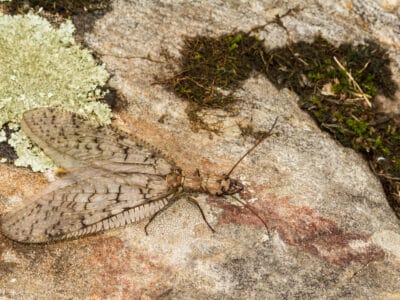
- Kingdom
- Animalia
- Phylum
- Arthropoda
- Form
- Insecta
- Guild
- Megaloptera
- Family
- Corydalidae
- Genus
- Corydalus
- Scientific Name
- Corydalus cornutus
Fun Fact: They are quite vicious and, when provoked, volition administer a painful bite that stings for a long time.
The eastern dobsonfly is not actually a wing but a big winged insect with protruding mandibles. People commonly see them near street lamps. They are helplessly attracted to lights and are nocturnal creatures. They are quite vicious and, when provoked, volition administrate a painful bite that stings for a long time. These insects have a […] Read More
Eastern Fence Lizard
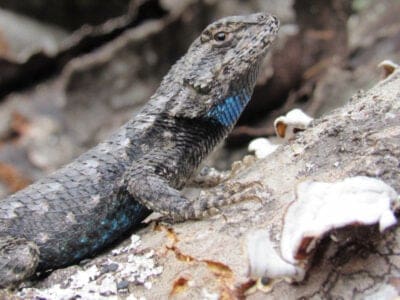
- Kingdom
- Animalia
- Phylum
- Chordata
- Class
- Reptilia
- Order
- Squamata
- Family
- Phyrnosomatidae
- Genus
- Sceloporus
- Scientific Proper noun
- Sceloporus undulatas
Fun Fact: Females are usually larger than males.
"A flourishing species of spiny lizard" The eastern fence lizard is a common spiny lizard found throughout the eastern United States and Mexico. It is easy to distinguish from other native species past its appearance. The rough, spiny scales, distinct dorsal blueprint, and brilliant blueish markings are telltale characteristics that are hands identifiable. These reptiles […] Read More
Eastern Glass Cadger
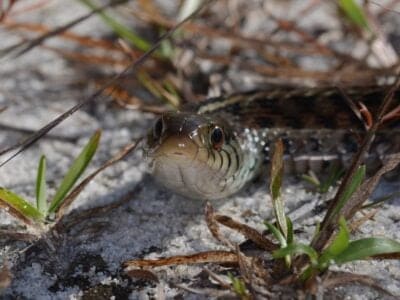
- Kingdom
- Animalia
- Phylum
- Chordata
- Class
- Reptilia
- Order
- Squamata
- Family
- Anguidae
- Genus
- Ophisaurus
- Scientific Name
- Ophisaurus ventralis
Fun Fact: When the glass lizard loses its tail information technology can grow some other one. Merely the new tail lacks the markings of the old one and is usually shorter.
"Information technology'southward a cadger, not a snake!" Wondering why this legless lizard didn't only go ahead and turn into a snake is beyond the scope of this article, just Ophisaurus ventralis is very much a lizard. It blinks, information technology has ears, and it tin can only open its mouth so broad to eat a meal. Most of […] Read More than
Eastern Gorilla
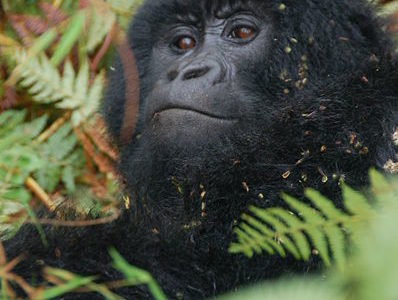
- Kingdom
- Animalia
- Phylum
- Chordata
- Class
- Mammalia
- Order
- Primates
- Family
- Hominidae
- Genus
- Gorilla
- Scientific Proper noun
- Gorilla berengei
Fun Fact: The largest primate in the globe!
"The Eastern Gorilla is known equally the largest living primate" The eastern gorilla belongs to the genus gorilla. It is 1 of the bully apes and is very closely related to humans. It is often observed that the eastern gorilla, which is most commonly found in jungles on mountain tops, comes with several features that […] Read More
Eastern Gray Squirrel

- Kingdom
- Animalia
- Phylum
- Chordata
- Class
- Mammalia
- Order
- Rodentia
- Family
- Sciuridae
- Genus
- Sciurus
- Scientific Name
- Sciurus carolinensis
Fun Fact: Eastern gray squirrels utilize both memory and scent to notice their buried caches of food during the winter.
Up to twenty eastern gray squirrels live in every acre of wood in the eastern one-half of the U.s.. A common inhabitant of forests, parks, and urban areas of the eastern U.s.a., the eastern grayness squirrel is instantly recognizable to a large portion of the country. Despite the fact that they are a […] Read More than
Eastern Greenish Mamba
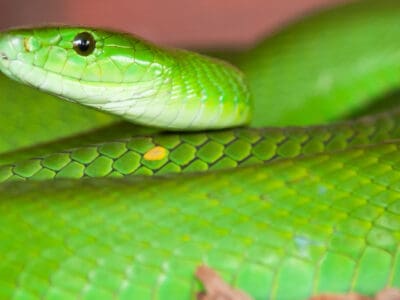
- Kingdom
- Animalia
- Phylum
- Chordata
- Class
- Reptilia
- Order
- Squamata
- Family
- Elapidae
- Genus
- Dendroaspis
- Scientific Proper noun
- Dendroaspis angusticeps
Fun Fact: It is completely arboreal, and its green colour is ane of the adaptations that brand life in the copse possible.
Greenish, reclusive, and mortiferous Though it's not as venomous as other species of mamba, the eastern green mamba is still a dangerous serpent if it bites you. The expert news is that it is so secretive and shy that bites, including deadly ones, are uncommon. Not only that, the snake lives in the trees, so […] Read More
Eastern Hognose Snake
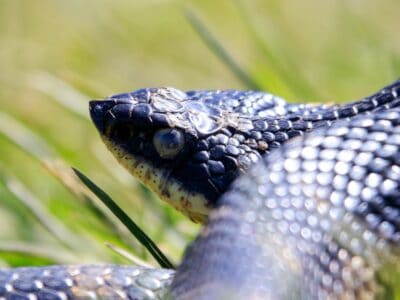
- Kingdom
- Animalia
- Phylum
- Chordata
- Class
- Reptilia
- Order
- Squamata
- Family
- Colubridae
- Genus
- Heterodon
- Scientific Proper noun
- Heterodon platirhinos
Fun Fact: Eastern hognose snakes are venomous, just just to frogs and toads.
Eastern hognose snakes eat toads and frogs and are immune to the skin toxins toads excrete. The eastern hognose is a small, mildly venomous ophidian native to southern Ontario, Canada, and the eastern United States. Its threat displays are antics that everyone should witness at least once in their life. Incredible Eastern Hognose Facts Their […] Read More than
Eastern Indigo Snake
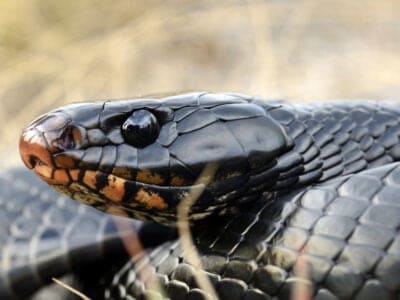
- Kingdom
- Animalia
- Phylum
- Chordata
- Grade
- Reptilia
- Order
- Squamata
- Family
- Colubridae
- Genus
- Drymarchon
- Scientific Proper noun
- Drymarchon couperi
Fun Fact: Eastern Indigo snakes regularly chase downwards and eat rattlesnakes and may be allowed to their venom.
The Eastern indigo snake is a long black nonvenomous ophidian that inhabits the southeastern United States. It is the longest snake native to North America and is known for chasing down its prey, including all native venomous snakes such as copperheads and rattlesnakes. This snake is non ambitious simply volition defend itself past biting or […] Read More
Eastern Lowland Gorilla
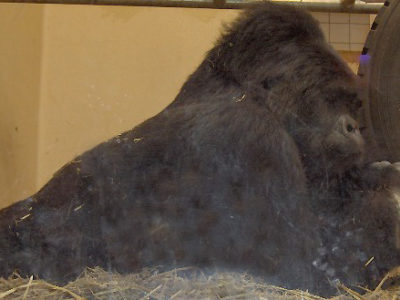
- Kingdom
- Animalia
- Phylum
- Chordata
- Form
- Mammalia
- Order
- Primates
- Family
- Hominidae
- Genus
- Gorilla
- Scientific Name
- Gorilla Berengei Graueri
Fun Fact: Less than 5,000 in the wild!
"The largest primates in the earth." One of the largest subspecies of the Great Apes, the Eastern lowland gorilla is one of two species of gorilla living in Africa. They are an endangered species, with recent estimates placing the count at about 5,000 individuals left in the wild. These gorillas are vulnerable to poaching, and […] Read More
Eastern Meadowlark

- Kingdom
- Animalia
- Phylum
- Chordata
- Grade
- Aves
- Gild
- Passeriformes
- Family unit
- Icteridae
- Genus
- Sturnella
- Scientific Proper noun
- Sturnella Magna
Fun Fact: They tin can live upward to nine years.
Summary The Eastern Meadowlark'southward bright yellow underbelly makes it easy to spot, especially in places like the United States, México, Venezuela, and throughout Key America. Residing in open prairies and pastures, it's no wonder why "meadow" is a fixture of their proper name. They can lay anywhere from three to 7 eggs at a time, which […] Read More
Eastern Phoebe
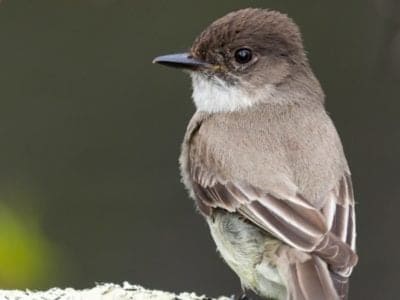
- Kingdom
- Animalia
- Phylum
- Chordata
- Class
- Aves
- Order
- Passeriformes
- Family
- Tyrannidae
- Genus
- Sayornis
- Scientific Proper name
- Sayornis phoebe
Fun Fact: This passerine bird can sing its song without ever hearing some other bird vocalize first.
The Eastern phoebe is a passerine, belonging to one of the largest bird families in the earth – the flycatcher family – which contains over 400 species. They sing out their name in curt and unmelodic songs, though this call is primarily used by the male during the breeding flavour. They mate for life, though […] Read More
Eastern Racer
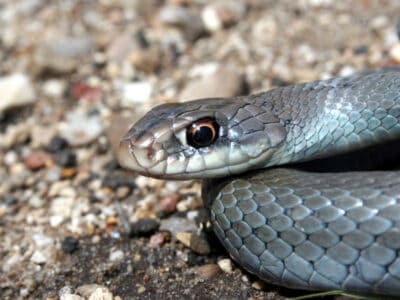
- Kingdom
- Animalia
- Phylum
- Chordata
- Course
- Reptilia
- Society
- Squamata
- Family
- Colubridae
- Genus
- Coluber
- Scientific Proper noun
- Coluber constrictor
Fun Fact: Fast and Furious!
"Fast and Furious" If anyone living in the American south or in states east of the Rockies is going to see a snake, it will most likely be a blackness racer. Different a lot of snakes, this reptile, the merely fellow member of the Coluber genus, is diurnal and is not shy nearly raising its caput […] Read More
Eastern Rat snake

- Kingdom
- Animalia
- Phylum
- Chordata
- Form
- Reptilia
- Order
- Squamata
- Family
- Colubridae
- Genus
- Pantherophis
- Scientific Proper noun
- Pantherophis alleghaniensis
Fun Fact: Rat snakes are medium-to-big, nonvenomous snakes that kill by constriction.
Eastern Rat snakes earned their sobriquet from the fact that rats constitute a major part of their nutrition. The Eastern rat snake is too known colloquially every bit the chicken ophidian considering it has a reputation for devouring domesticated fowl eggs whole. Despite that, humans take long lived with these snake species because they maintain the […] Read More
Eastern Turkey (Wild Turkey)

- Kingdom
- Animalia
- Phylum
- Chordata
- Class
- Aves
- Order
- Galliformes
- Family
- Phasianidae
- Genus
- Meleagris
- Scientific Name
- Meleagris gallopavo silvestris
Fun Fact: You can hear their gobbles up to a mile away!
"Males accept large featherless, blood-red heads, necks, and wattles, with fleshy growths chosen caruncles." Summary The eastern turkey (Meleagris gallopavo silvestris) is a big upland ground bird native to North America. It inhabits hardwood forests with scattered clearings where information technology spends time foraging low to the ground or roosting in flocks in tall trees. These […] Read More
Eastern Woodrat
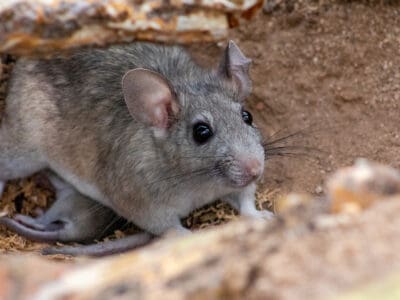
- Kingdom
- Animalia
- Phylum
- Chordata
- Grade
- Mammalia
- Order
- Rodentia
- Family unit
- Cricetidae
- Genus
- Neotama
- Scientific Name
- Neotama floridana
Fun Fact: The eastern woodrat mating ritual involves a potentially deadly fight between the male and female before reproduction begins!
Eastern Woodrat Summary "Despite being a pest to humans, the eastern woodrat plays an important ecological function within its habitat." The eastern woodrat, a medium-sized rodent besides chosen the bush-league rat, is native to the eastern and cardinal U.s.a.. It now lives from southern Illinois and the Appalachian Mountains of New York to as […] Read More
Echidna

- Kingdom
- Animalia
- Phylum
- Chordata
- Grade
- Mammalia
- Society
- Monotremata
- Family
- Tachyglossidae
- Genus
- Tachyglossus
- Scientific Name
- Tachyglossus Aculeatus
Fun Fact: Also known as the Spiny Anteater!
"1 of only 2 mammals that lays eggs!" Echidnas, formerly called the spiny or spiky anteater, is one of just two mammals that lays eggs! The other is the platypus. Interestingly, both animals are institute in Australia. Echidnas are also found in New Guinea. Every other mammal gives birth to alive young. Like other mammals, […] Read More
Eclectus Parrot
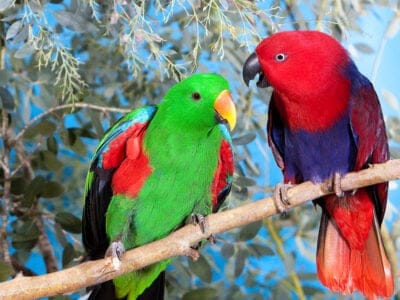
- Kingdom
- Animalia
- Phylum
- Chordata
- Class
- Aves
- Gild
- Psittaciformes
- Family
- Psittacidae
- Genus
- Eclectus
- Scientific Name
- Eclectus roratus
Fun Fact: Does not squawk like other parrot species.
The beautifully colored Eclectus parrot is loved by many bird enthusiasts and pet owners alike. While this species is a rare find, they are medium-sized birds that predominantly live in the humid conditions of the rainforest for their 30-year lifespan. Females are very maternal, and all genders volition bail with multiple partners during mating flavor. […] Read More
Edible Frog
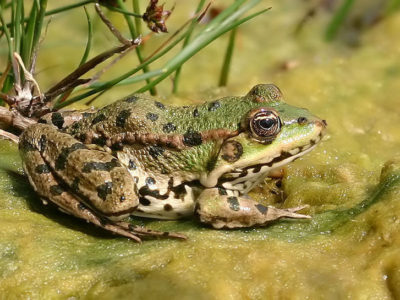
- Kingdom
- Animalia
- Phylum
- Chordata
- Class
- Amphibia
- Order
- Anura
- Family
- Ranidae
- Genus
- Pelophylax
- Scientific Name
- Pelophylax kl. esculentus
Fun Fact: Are known to guard the muddy banks!
Edible Frog Classification and Development The Edible Frog is a species of Frog plant across Europe that is also known equally the Common Water Frog and the Greenish Frog. The Edible Frog is a fertile hybrid of two other European Frogs, the Puddle Frog and the Marsh Frog, that bred when populations where isolated close […] Read More than
Eel

- Kingdom
- Animalia
- Phylum
- Chordata
- Form
- Actinopterygii
- Order
- Anguilliformes
Fun Fact: Eels can exist a mere few inches long to 13 feet!
The trunk of an eel has a slimy coating, hence the phrase, "Glace as an eel." The virtually dangerous eel species is the conger. Although these fish are very snakelike in appearance, they are actually fish. They are ray-finned fishes of the order Anguilliformes, with the term "eel" referring to ophidian-like fish such as electrical, […] Read More
Egyptian Cobra (Egyptian Asp)

- Kingdom
- Animalia
- Phylum
- Chordata
- Grade
- Reptilia
- Lodge
- squamata
- Family
- Elapidae
- Genus
- Naja
- Scientific Proper name
- Naja haje
Fun Fact: The Egyptian cobra is 1 of the largest cobras in Africa.
The Egyptian cobra is also known as the Egyptian Asp, the snouted cobra or the banded Egyptian cobra. The Egyptian cobra (asp) is massive, taking up about 8 feet in length along their heavy body. The merely cobra that exceeds its size in the entire African continent is the woods cobra. With over 30 hatchlings […] Read More
Egyptian Goose
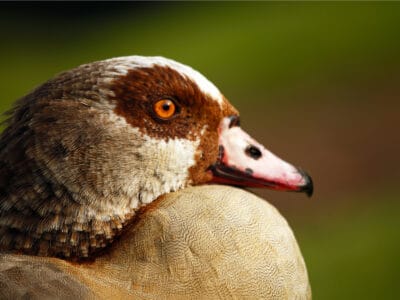
- Kingdom
- Animalia
- Phylum
- Chordata
- Class
- Aves
- Order
- Anseriformes
- Family
- Anatidae
- Genus
- Alopochen
- Scientific Name
- Alopochen aegyptiacus
Fun Fact: A duck species that resembles a goose when flying
Despite its proper noun, the Egyptian Goose is a type of duck prominently featured in ancient Egyptian art. These birds have a natural range around the Nile River; nonetheless, their range has extended exterior Arab republic of egypt, with populations as far away equally Florida in the United States. These birds are seldom migratory and have a diet that […] Read More
Egyptian Mau
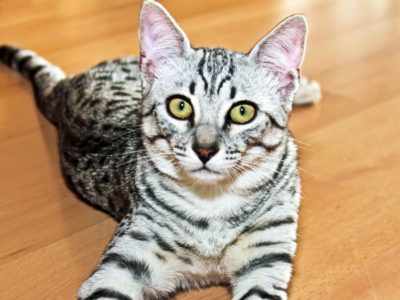
- Kingdom
- Animalia
- Phylum
- Chordata
- Form
- Mammalia
- Order
- Carnivora
- Family unit
- Felidae
- Genus
- Felis
- Scientific Proper noun
- Felis catus
Fun Fact: An ancient breed of domestic true cat!
The Egyptian Mau is a rare small-to-medium size short-haired breed of domesticated cat that is naturally spotted on the tips of its fur. Originating in Egypt, information technology is considered an ancestor of mod domestic cats as well as 1 of the fastest. The brood name of "mau" means "true cat" in Egyptian Arabic. Egyptian Mau Traits: […] Read More
Egyptian Tortoise
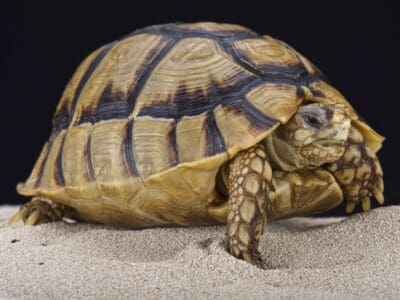
- Kingdom
- Animalia
- Phylum
- Chordata
- Class
- Reptilia
- Gild
- Testudines
- Family
- Testudinidae
- Genus
- Testudo
- Scientific Name
- Testudo kleinmanni
Fun Fact: The Egyptian tortoise is one of the smallest tortoise species in the globe.
The Egyptian tortoise is one of the smallest tortoise species in the world. Summary The Egyptian tortoise is the second smallest tortoise in the world subsequently the speckled tortoise. This tortoise is so pocket-size that information technology can comfortably fit into the palm of an average human. This species of tortoise used to be common throughout […] Read More
Egyptian Vulture

- Kingdom
- Animalia
- Phylum
- Chordata
- Grade
- Aves
- Guild
- Accipitriformes
- Family
- Accipitridae
- Genus
- Neophron
- Scientific Name
- Neophron percnopterus
Fun Fact: They steal large ostrich eggs and use rocks and pebbles to crack the shells.
"They huddle together for warmth." Summary The Egyptian vulture (Neophron percnopterus) is a pocket-size Old World vulture native to Africa, Southern Europe, and Southern asia. It inhabits open up, barren areas almost humans, with plenty of food options. This bird is opportunistic, devouring anything from man feces to ostrich eggs. Discover all the interesting facts about […] Read More
Eland

- Kingdom
- Animalia
- Phylum
- Chordata
- Class
- Mammalia
- Order
- Artiodactyla
- Family
- Bovidae
- Genus
- Taurotragus
- Scientific Proper name
- Taurotragus oryx
Fun Fact: Both females and males take horns.
The spiral-horned eland is ane of the biggest antelope species of Africa, displaying tawny colors with black markings throughout their body. Identification of this species over other antelope species tin can be difficult, but their spiral horns are a dead giveaway. Between the genders, females boast the biggest horns at up to 27 inches long. This […] Read More than
Elasmosaurus
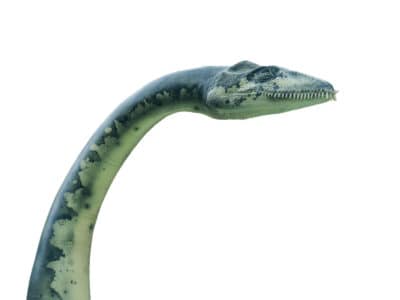
- Kingdom
- Animalia
- Phylum
- Chordata
- Class
- Reptilia
- Guild
- †Plesiosauria
- Family unit
- †Elasmosauridae
- Genus
- †Elasmosaurus
- Scientific Proper name
- †Elasmosaurus platyurus
Fun Fact: Elasmosaurus is an extinct reptile species.
Description & Size Elasmosaurus is a genus of plesiosaur, which loosely translates to mean "thin-plate reptile" or "flat-tailed." Though information technology is often associated with dinosaurs that traveled underwater, they aren't actually a dinosaur – they are an extinct reptile species. They were the first to be identified as a plesiosaur, and every variation of plesiosaur […] Read More
Elasmotherium

- Kingdom
- Animalia
- Phylum
- Chordata
- Course
- Mammalia
- Order
- Perissodactyla
- Family
- Rhinocerotidae
- Genus
- †Elasmotherium
- Scientific Proper name
- †Elasmotherium sibiricum
Fun Fact: Elasmotherium might take had a monstrous horn, giving it the name "The Siberian Unicorn."
Description & Size Elasmotherium sibiricum was a large relative of the rhinoceros. It is an extinct species that certainly crossed paths with humans and may accept lived up to 30,000 years agone. Its being lasted from the Late Miocene Era to only a few m years before the stop of the Pleistocene, which ended 11,700 […] Read More than
Electric Catfish
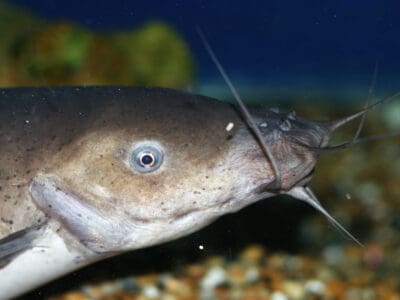
- Kingdom
- Animalia
- Phylum
- Chordata
- Form
- Actinopterygii
- Club
- Siluriformes
- Family
- Malapteruridae
Fun Fact: The electrical catfish can discharge an electric daze up to 450 volts
The electric catfish is a family of around 21 species that tin discharge an electrical shock from a specialized organ. This is non the just catfish family with an electric organ, merely its electrical ability is especially well-adult compared to the others. The catfish tin belch a shock of up to 450 volts to defend […] Read More than
Electric Eel
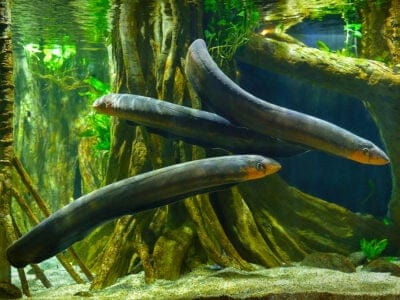
- Kingdom
- Animalia
- Phylum
- Chordata
- Course
- Actinopterygii
- Order
- Gymnotiformes
- Family
- Gymnotidae
- Genus
- Electrophorus
- Scientific Proper noun
- Electrophorus Electricus
Fun Fact: Despite its powerful shock, electric eels accept terrible vision.
"For 250 years, scientists thought the electrical eel was a singular species and completely lone in its genus." Known as the "numb fish" in some parts of the world, the electrical eel isn't a true eel. This freshwater fish resides predominantly in the Amazon, fifty-fifty though the larvae float to New Zealand as they hatch. The […] Read More
Elegant Tern
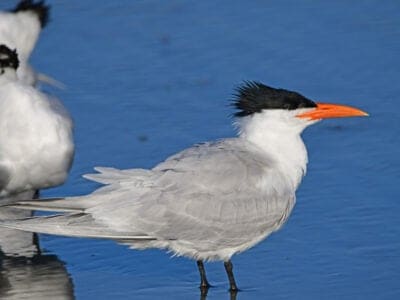
- Kingdom
- Animalia
- Phylum
- Chordata
- Grade
- Aves
- Order
- Charadriiformes
- Family
- Laridae
- Genus
- Thalasseus
- Scientific Proper noun
- Thalasseus elegans
Fun Fact: Take a lifespan of 20 years or more
"Elegant Terns can live to be 20 years sometime or more than." Elegant Terns are social birds with a loud phone call that sounds similar, 'kar-eek!' They live throughout a range of rocky coastal areas, lagoons, and bays in North and South America. An developed has white feathers and a night cap or mask, of black feathers […] Read More than
Elephant
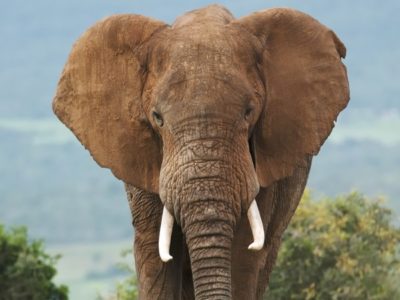
- Kingdom
- Animalia
- Phylum
- Chordata
- Class
- Mammalia
- Social club
- Proboscidea
- Family unit
- Elephantidae
Fun Fact: Spends around 22 hours a twenty-four hour period eating!
The elephant is the largest state animal in the world. These massive giants exhibit all kinds of complex behavior that in some ways mirror our own behavior simply in other ways are distinct and unique to them. This has made them the subject field of rigorous behavioral, anatomical, and cerebral studies, likewise as a source […] Read More
Elephant Beetle
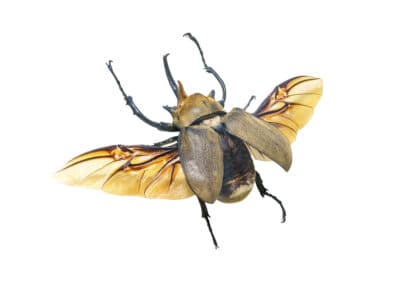
- Kingdom
- Animalia
- Phylum
- Arthropoda
- Course
- Insecta
- Order
- Coleoptera
- Family
- Scarabaeidae
- Genus
- Megasoma
- Scientific Proper noun
- Megasoma elephas
Fun Fact: The males have multiple horns at the front of their bodies.
Information technology may not be as big as an elephant or have a body, but the Elephant Beetle shares some interesting features with its namesake. While these beetles are not as big as elephants (or even the largest protrude in the animal kingdom), their size sure makes them an interesting specimen to study. The males take […] Read More
Elephant Seal
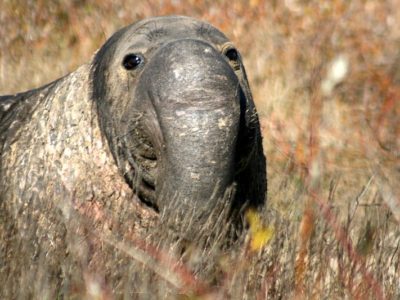
- Kingdom
- Animalia
- Phylum
- Chordata
- Class
- Mammalia
- Lodge
- Carnivora
- Family
- Phocidae
- Genus
- Mirounga
- Scientific Name
- Mirounga
Fun Fact: The largest species of seal in the globe!
Elephant seals can dive more than than 5,000 feet into the ocean and can hold their breath for two hours. The trunk-similar nose of this seal makes it like shooting fish in a barrel to see how it got its name. The boilerplate lifespan of a northern elephant seal is nine years while an elephant seal living in the Antarctic region can live from […] Read More
Elephant Shrew

- Kingdom
- Animalia
- Phylum
- Chordata
- Form
- Mammalia
- Club
- Macroscelidea
- Family unit
- Macroscelididae
- Genus
- Elephantulus
- Scientific Name
- Elephantulus
Fun Fact: Institute exclusively on the African continent!
You would never gauge it by looking at them, but elephant shrews are more closely related to elephants than shrews. Elephant shrews are minor, furry mammals that resemble giant mice or gerbils. In spite of their name, they are not actually shrews, and despite their advent, they are not rodents either. Elephant shrews are about […] Read More
Elf Owl

- Kingdom
- Animalia
- Phylum
- Chordata
- Course
- Aves
- Gild
- Strigiformes
- Family
- Strigidae
- Genus
- Micrathene
- Scientific Proper noun
- Micrathene Whitneyi
Fun Fact: The elf owl is the smallest and lightest owl in the world
"The world'southward smallest and lightest owl." Summary The elf owl (Micrathene whitneyi) lives in North America in the Southwestern The states and throughout most of United mexican states. It inhabits lowland areas with plenty of cover and nesting cavities, primarily foothill canyons and saguaros deserts. They spend their days perched on depression branches waiting for their prey […] Read More
Elk
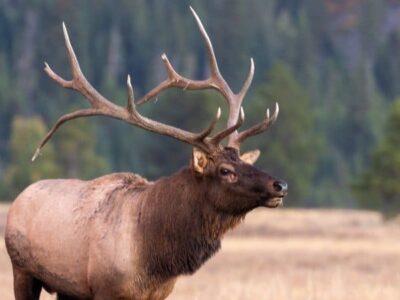
- Kingdom
- Animalia
- Phylum
- Chordata
- Course
- Mammalia
- Order
- Artiodactyla
- Family
- Cervidae
- Genus
- Cervus
- Scientific Proper noun
- Cervus canadensis
Fun Fact: Adult males can leap eight anxiety vertically
The elk or wapiti is i of the largest land-dwelling animals in North America, Central, and East Asia, where it lives in mountain meadows, forests, and forest edges. It is also the largest wild herbivore, or cervid, second just to the moose. The Roosevelt's elk, Tule elk, Rocky Mountain elk, and the Manitoban elk are […] Read More
Emerald Tree Boa

- Kingdom
- Animalia
- Phylum
- Chordata
- Grade
- Reptilia
- Lodge
- Squamata
- Family
- Boidae
- Genus
- Corallus
- Scientific Proper name
- Corallus caninus and Corallus batesii
Fun Fact: Their teeth are equally long as a fully-grown reticulated python
Emerald tree boas are beautiful nonvenomous boas that alive in tropical rainforests in South America. They are native to the Amazon Basin and nearby regions in South America in the countries of Suriname, Guyana, French Guiana, Republic of colombia, Brazil, Venezuela, and Peru. Like most snakes, they're terrific rodent control. Some villages introduce them into their areas […] Read More
Emerald Tree Monitor
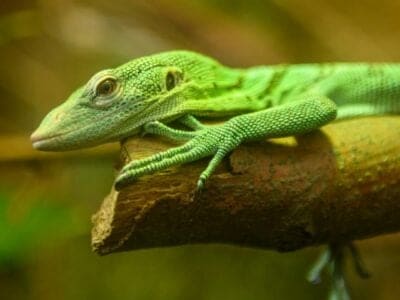
- Kingdom
- Animalia
- Phylum
- Chordata
- Class
- Reptilia
- Society
- Squamata
- Family
- Varanidae
- Genus
- Varanus
- Scientific Name
- Varanus prasinus
Fun Fact: They lay their eggs in termite nests!
"The emerald tree monitor has a tail double the length of its body." The emerald tree monitor is a beautiful cadger that lives in the tropical rainforests of Indonesia and Papua New Guinea. Information technology is besides establish in the islands of the Torres Strait well-nigh Australia. Its vivid green color, slender trunk, and long tail […] Read More than
Emperor Penguin
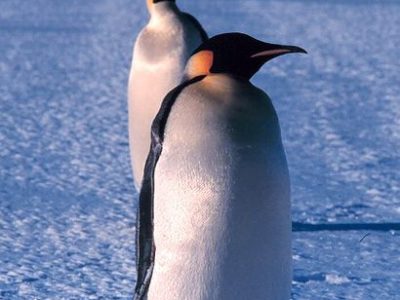
- Kingdom
- Animalia
- Phylum
- Chordata
- Class
- Aves
- Order
- Sphenisciformes
- Family unit
- Spheniscidae
- Genus
- Aptenodytes
- Scientific Name
- Aptenodytes forsteri
Fun Fact: The world's largest species of penguin!
Emperor Penguin Classification and Evolution The Emperor Penguin is institute on and effectually the Antarctic continent and is non just the largest species of penguin in the world simply also 1 of the most unique. Instead of breeding in the warmer summer months like other penguin species, Emperor Penguins lay and incubate their eggs during […] Read More than
Emperor Tamarin
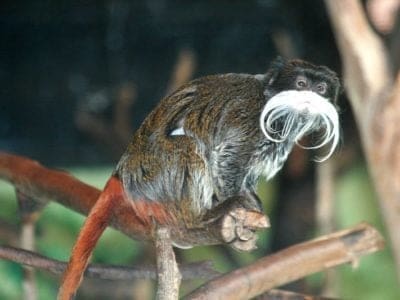
- Kingdom
- Animalia
- Phylum
- Chordata
- Course
- Mammalia
- Lodge
- Primates
- Family
- Callitrichidae
- Genus
- Saguinus
- Scientific Proper name
- Saguinus Imperator
Fun Fact: Has an elegant white moustache!
"The emperor tamarin is a species of tamarin allegedly named for its resemblance to the German emperor Wilhelm 2." With a graceful white mustache resembling German emperor Wilhelm 2, the emperor tamarin belongs to a species of pocket-size monkeys and is mostly found in the forests of South America. Its name was first mentioned in […] Read More than
Emu

- Kingdom
- Animalia
- Phylum
- Chordata
- Class
- Aves
- Society
- Casuariiformes
- Family
- Casuariidae
- Genus
- Dromaius
- Scientific Proper name
- Dromaius novaehollandiae
Fun Fact: The largest bird in Commonwealth of australia!
"An emu has a running stride of ix feet" Emus are birds that make their home on the continent of Australia. They can grow equally tall as 6.2 feet. This bird is like in appearance to an ostrich. Emus are omnivores eating seeds, fruits, insects, and minor animals. Their lifespan is from 5 to x […] Read More
English Bulldog

- Kingdom
- Animalia
- Phylum
- Chordata
- Form
- Mammalia
- Club
- Carnivora
- Family
- Canidae
- Genus
- Canis
- Scientific Name
- Canis lupus
Fun Fact: Bulldogs were originally bred to "pin" bulls.
As the fifth-virtually popular purebred dog breed, English bulldogs are the meridian college mascot of the University of Georgia. The English Bulldog is total of love and cuddles for the entire family, but don't expect much more out of them. Though this canis familiaris breed was originally bred to participate in a spectator sport called "bull-baiting," […] Read More
English Cocker Spaniel

- Kingdom
- Animalia
- Phylum
- Chordata
- Grade
- Mammalia
- Gild
- Carnivora
- Family
- Canidae
- Genus
- Canis
- Scientific Name
- Canis Lupus
Fun Fact: Intelligent even so stubborn past nature!
English Cocker Spaniels are a sporting dog breed. Hundreds of years agone, the Spaniel breeds were developed in England. These breeds were descended from dogs from Espana, hence the name Spaniel. Originally, the breeds were classified past whether they were a land or h2o spaniel. The three land spaniels were known as the Springing -, […] Read More
English Cream Golden Retriever
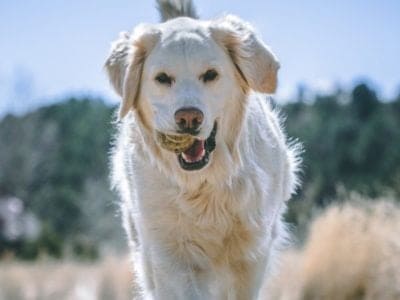
- Kingdom
- Animalia
- Phylum
- Chordata
- Class
- Mammalia
- Order
- Carnivora
- Family
- Canidae
- Genus
- Canis
- Scientific Proper name
- Canis lupus
Fun Fact: Although their coats tin go incredibly low-cal in color, golden retrievers never have purely white coats.
The English cream golden retriever isn't a registered breed, but that hasn't stopped them from existence incredibly popular. You lot tin find light-colored gold retriever puppies beingness sold nether the name of white, silvery, and even platinum gold retrievers. Just recollect to cheque the pedigree, and don't purchase from a breeder who selects for coat color […] Read More
English Foxhound

- Kingdom
- Animalia
- Phylum
- Chordata
- Class
- Mammalia
- Order
- Carnivora
- Family
- Canidae
- Genus
- Canis
- Scientific Name
- Canis lupus
Fun Fact: English Foxhounds were bred to work and live in a pack. Because of this, this breed is happiest when they are around other dogs.
English Foxhounds were bred to work and alive in a pack. Considering of this, this breed is happiest when they are effectually other dogs. The English Foxhound was bred in the 1600s every bit a hunting dog for British foxhunts. This canine was bred past mixing Greyhound-blazon hounds and large stag-hunting hounds. This mix led to […] Read More
English Pointer

- Kingdom
- Animalia
- Phylum
- Chordata
- Class
- Mammalia
- Guild
- Carnivora
- Family
- Canidae
- Genus
- Canis
- Scientific Name
- Canis lupus
Fun Fact:
English Pointers signal their tail straight out and lift a paw off the basis when they see a rabbit, partridge, or other small casualty. English Pointers were bred to accompany their possessor on hunting trips. When they spot a rabbit, bird, fox, or other game, these dogs stand perfectly still, pointing their tail direct out. […] Read More than
English Setter
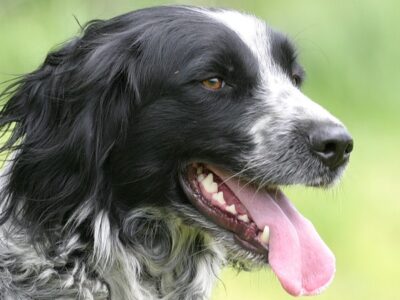
- Kingdom
- Animalia
- Phylum
- Chordata
- Form
- Mammalia
- Society
- Carnivora
- Family
- Canidae
- Genus
- Canis
- Scientific Name
- Canis lupus
Fun Fact: English Setters were first bred between 400 and 500 years agone.
The English Setter was likely first bred between 400 and 500 years ago. Information technology is believed that they were bred by mixing Castilian Pointers, H2o Spaniels, and Springer Spaniels. The English Setter was given its name considering they were bred to "prepare" or quietly lay downwardly when looking for birds to hunt. Their human hunting […] Read More
English Shepherd
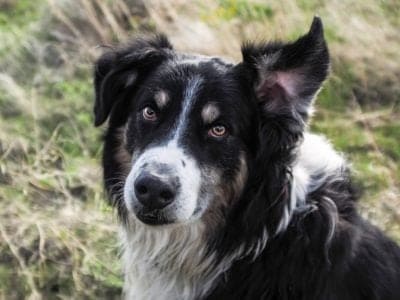
- Kingdom
- Animalia
- Phylum
- Chordata
- Grade
- Mammalia
- Club
- Carnivora
- Family unit
- Canidae
- Genus
- Canis
- Scientific Name
- Canis lupus
Fun Fact: Highly intelligent and independent!
English Shepherds are excellent herding dogs and as well make a skilful guard domestic dog. English language Shepherds descended from Shepherds' dogs from southern Scotland and England. They are also related to Border Collies, Scotch Collies, and Australian Shepherds, though English Shepherds were more of a working domestic dog than a show dog, like many of their cousins. While […] Read More than
English Springer Spaniel

- Kingdom
- Animalia
- Phylum
- Chordata
- Class
- Mammalia
- Order
- Carnivora
- Family
- Canidae
- Genus
- Canis
- Scientific Proper name
- Canis lupus
Fun Fact: Friendly and eager to delight!
Bred to remain in the field for most of the day, the English Springer Spaniel has great stamina and a diligent personality that make it ideal for game hunting. The English language Springer Spaniel is a very common breed of gun dog that was originally created in England (probably bred from the Norfolk or Shropshire Spaniels […] Read More
Entlebucher Mountain Canis familiaris

- Kingdom
- Animalia
- Phylum
- Chordata
- Class
- Mammalia
- Gild
- Carnivora
- Family
- Canidae
- Genus
- Canis
- Scientific Name
- Canis lupus
Fun Fact: Native to parts of the Swiss Alps!
The Entlebucher mount dogs are closely related to the Bernese mountain dogs. They become their name from herders in the Swiss Alps. The Entlebucher mountain dogs, besides known as the Entlebucher Sennenhund, are medium-sized dogs. The name Sennenhund comes from the people of the region who are chosen Senn, helping them in their work as […] Read More
Epagneul Pont Audemer
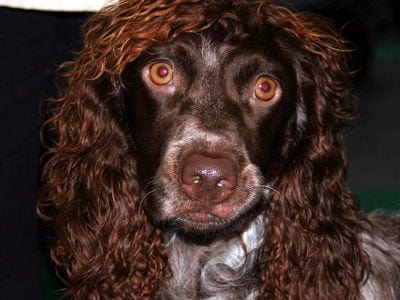
- Kingdom
- Animalia
- Phylum
- Chordata
- Class
- Mammalia
- Order
- Carnivora
- Family unit
- Canidae
- Genus
- Canis
- Scientific Name
- Canis lupus
Fun Fact: Hard-working, gentle and affectionate!
The Epagneul Pont Audemer is a diligent breed and is typically easy to train and is fun-loving and affectionate. Information technology was recognized by the United Kennel Club in 1996. Very popularly known as the 'niggling clown of marshes' in France, the Epagneul Pont Audemer is a French dog and is too known to be a […] Read More
Equatorial Spitting Cobra
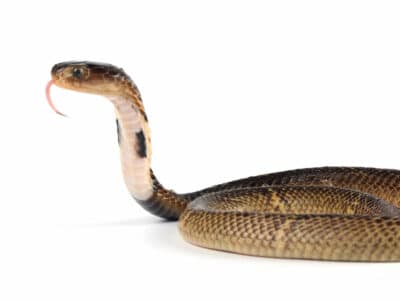
- Kingdom
- Animalia
- Phylum
- Chordata
- Class
- Reptilia
- Gild
- Squamata
- Family unit
- Elapidae
- Genus
- Naja
- Scientific Name
- Naja sumatrana
Fun Fact: Its hood is actually fabricated of ribs.
The Equatorial spitting cobra, which has many different names, can spray venom upwardly to 1.5 meters away if information technology feels threatened. It is an opportunistic eater that latches on with its fangs to kill prey. With big nostrils and a circular oral fissure, they can be quite intimidating with their loud hiss, alarm you to stay […] Read More
Ermine

- Kingdom
- Animalia
- Phylum
- Chordata
- Class
- Mammalia
- Lodge
- Carnivora
- Family
- Mustelidae
- Genus
- Mustela
- Scientific Proper name
- Mustela erminea
Fun Fact: A very bold and ferocious predator!
Despite its small size, the ermine has a reputation as a fierce and territorial carnivore that can accept on animals even bigger than itself. The ermine is a type of weasel with a slender body that inhabits the temperate and arctic regions of Eurasia and North America. Also normally known as the stoat or the […] Read More
Escolar
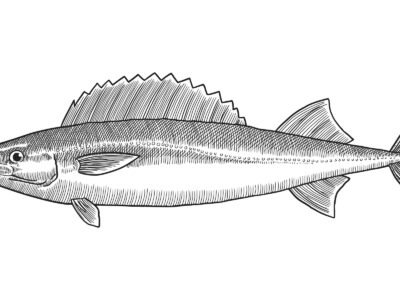
- Kingdom
- Animalia
- Phylum
- Chordata
- Class
- Actinopterygii
- Order
- Scombriformes
- Family unit
- Gempylidae
- Genus
- Lepidocybium
- Scientific Name
- Lepidocybium flavobrunneum
Fun Fact: Its arrangement can't metabolize wax esters, which can lead to unpleasantness for diners.
Escolar Summary "The Bane of Sushi Lovers" The escolar is one of the best-tasting fish effectually, and its nutrition values are high. However, if you eat likewise much of it you might pay with cramping diarrhea! Though y'all should only swallow a little of this fish at a time, it is often mislabeled every bit something […] Read More
Eskimo Dog

- Kingdom
- Animalia
- Phylum
- Chordata
- Course
- Mammalia
- Gild
- Carnivora
- Family unit
- Canidae
- Genus
- Canis
- Scientific Proper name
- Canis Lupus
Fun Fact: Takes pure please in common cold weather!
Eskimo dogs are affectionately known equally "eskies." They are fluffy white dogs that can exist toy-, miniature, or standard-sized. This breed is very playful, intelligent, and loving. They brand a not bad family dog and beloved children. While yous may believe that these dogs were bred in America, this brood is really from Federal republic of germany. They descended […] Read More than
Eskipoo

- Kingdom
- Animalia
- Phylum
- Chordata
- Class
- Mammalia
- Club
- Carnivora
- Family
- Canidae
- Genus
- Canis
- Scientific Name
- Canis lupus
Fun Fact: Eskipoos are chosen pookimos by the American Canine Hybrid Club, Designer Dogs Kennel Club, and Designer Breed Registry.
It takes well-nigh eskipoos 15-to-17 months to get full grown. The Eskipoo is a designer dog accomplished by crossing an American Eskimo dog with a European poodle. This brood that weighs about 15 pounds stands most 11 inches tall. Breeders developed this designer breed as a happy-go-lucky family addition. Most have a double coat, which […] Read More than
Estrela Mount Domestic dog

- Kingdom
- Animalia
- Phylum
- Chordata
- Class
- Mammalia
- Club
- Carnivora
- Family unit
- Canidae
- Genus
- Canis
- Scientific Proper noun
- Canis lupus
Fun Fact: Very protective and stubborn!
The Estrela Mount Dog breed started every bit a herd-guarding domestic dog in Portugal. Today, this breed is the companion dog of the Portuguese constabulary force. These large, agile dogs make excellent guard dogs because they are incredibly loyal to their masters and wary of strangers. Proper socialization in their early on days is crucial; without information technology, you […] Read More
Euoplocephalus
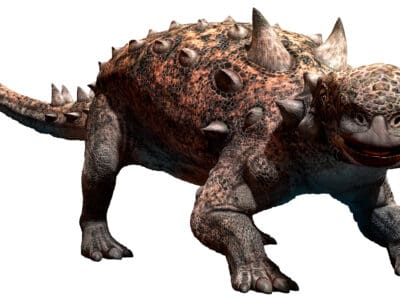
- Kingdom
- Animalia
- Phylum
- Chordata
- Order
- Ornithischia
- Family
- Ankylosauridae
- Genus
- Euoplocephalus
- Scientific Name
- Euoplocephalus tutus
Fun Fact: Euplocephalus are the but Ankylosaurid dinosaurs with a os plated head.
Euoplocephalus is a genus of giant, heavily armored dinosaurs that lived in N America during the Late Cretaceous catamenia. This dinosaur had a well-protected body with bony plates covering its back and a clubbed tail. Nevertheless, information technology was a gentle herbivore, and its armor was only useful for self-defence force. Description & Size Euoplocephalus is a […] Read More
Eurasian Beaver
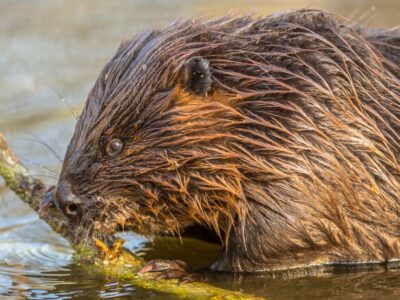
- Kingdom
- Animalia
- Phylum
- Chordata
- Class
- Mammalia
- Order
- Rodentia
- Family unit
- Castoridae
- Genus
- Castor
- Scientific Name
- Castor fiber
Fun Fact: Eats 20% of its weight daily!
"The Eurasian beaver was once hunted for its castoreum." The Eurasian beaver is a big rodent native to Europe, Scandinavia, and parts of Asia. You lot can detect it in France, Espana, and the Great britain. In one case hunted to extinction in most of its range, the Eurasian beaver is now thriving and a conservation success story. […] Read More
Eurasian Collared Dove

- Kingdom
- Animalia
- Phylum
- Chordata
- Grade
- Aves
- Order
- Columbiformes
- Family
- Columbidae
- Genus
- Streptopelia
- Scientific Name
- Streptopelia decaocto
Fun Fact: The Eurasian collared dove has been extensively studied due to its amazing ability to quickly colonize new territories.
The Eurasian collared dove has been extensively studied due to its amazing ability to apace colonize new territories. The Eurasian collared dove is considered an invasive species in much of its territory. With an estimated population of 100 million or more than birds worldwide, and the ability to disperse hundreds of miles in each generation, this […] Read More than
Eurasian Jay
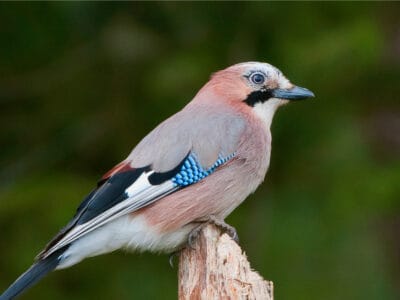
- Kingdom
- Animalia
- Phylum
- Chordata
- Class
- Aves
- Order
- Passeriformes
- Family
- Corvidae
- Genus
- Garrulus
- Scientific Name
- Garrulus glandarius
Fun Fact: The Eurasian jay has the ability to mimic other sounds
The Eurasian jay is among the most mutual songbirds throughout the entire Eurasian supercontinent. These graceful and highly intelligent birds can be seen flying effectually treetops and bushes. 1 of their almost unique adaptations is the ability to coffin acorns in the footing for afterwards use. They play an important ecological role by dispersing seeds […] Read More
Eurasian Lynx
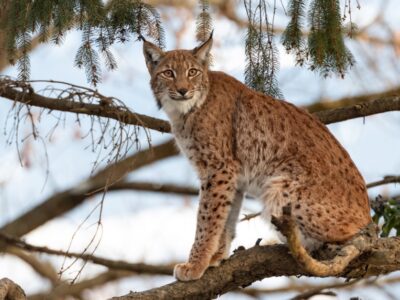
- Kingdom
- Animalia
- Phylum
- Chordata
- Class
- Mammalia
- Gild
- Carnivora
- Family
- Felidae
- Genus
- Lynx
- Scientific Name
- Lynx lynx
Fun Fact: Eurasian lynxes tin can survive extreme weather up to elevations of 18,000 feet
"The Eurasian lynx is an elusive cat that thrives in farthermost, hostile conditions." Sporting distinctive ear tufts and long cheek hairs, this animal is an extraordinarily effective hunter thanks to its incredible power and speed. They need so much infinite to hunt and mate, even so, that they rarely alive effectually humans. The remote mountains and […] Read More
Eurasian Nuthatch
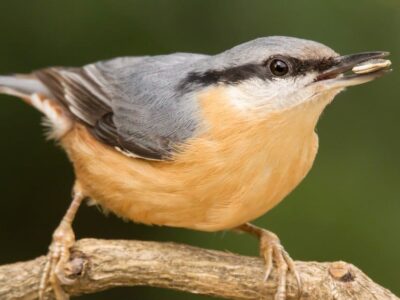
- Kingdom
- Animalia
- Phylum
- Chordata
- Grade
- Aves
- Order
- Passeriformes
- Family
- Sittidae
- Genus
- Sitta
- Scientific Name
- Sitta europaea
Fun Fact: Its song has been compared to a toy horn.
"The Eurasian Nuthatch tin fly 12 to 13mph" Eurasian nuthatches are omnivores with a diet of insects, seeds, and various types of nuts. They live in a forest habitat fabricated upward of older, deciduous trees. These birds make a high-pitched sound that has been compared to a toy horn. Their lifespan is usually two to […] Read More than
Eurasian Wolf

- Kingdom
- Animalia
- Phylum
- Chordata
- Class
- Mammalia
- Order
- Carnivora
- Family unit
- Canidae
- Genus
- Canis
- Scientific Name
- Canis lupus lupus
Fun Fact: Coloring depends on location.
The Eurasian Wolf is also known equally the Russian forest wolf or mutual wolf. This wolf is the largest subspecies of gray wolf in the world. It tin live to be up to 17 years quondam, though they typically live to exist half-dozen-viii years old in most regions. With a litter of about 6 pups […] Read More
European Bee-Eater
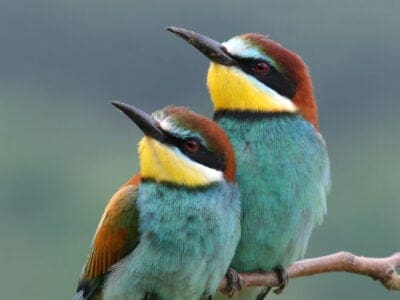
- Kingdom
- Animalia
- Phylum
- Chordata
- Form
- Aves
- Club
- Coraciiformes
- Family
- Meropidae
- Genus
- Merops
- Scientific Name
- Merops apiaster
Fun Fact: They tin eat up to 250 bees per day!
The European Bee-Eater is a relative of the Kingfisher, with a somewhat varied habitat and unusual nest-building habits. This bird, whose feathers generally contain all the colors of the rainbow, creates burrows, rather than traditional nests. Because of this, they are decumbent to parasite infestations. As their name suggests, they feed primarily on bees, though […] Read More than
European Corn Borer

- Kingdom
- Animalia
- Phylum
- Arthropoda
- Course
- Insecta
- Order
- Lepidoptera
- Family
- Crambidae
- Genus
- Ostrinia
- Scientific Proper name
- Ostrinia Nubilalis
Fun Fact: Female can lay up to 600 eggs in her 14-day lifespan
The European Corn Tapping is a moth and pest of many crops, mainly corn. Originating in Europe, it was introduced to the United States and has now spread to Canada likewise. Every bit a caterpillar, it spends the wintertime inside the stems of plants eating its way through the constitute and damaging the crops. Subsequently […] Read More
European Polecat
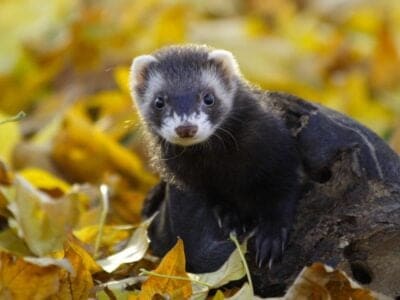
- Kingdom
- Animalia
- Phylum
- Chordata
- Class
- Mammalia
- Order
- Carnivora
- Family unit
- Mustelidae
- Genus
- Mustela
- Scientific Proper noun
- Mustela putorius
Fun Fact: Its fur changes colour in the winter!
"The European polecat can interbreed with ferrets." The European polecat is a small, slender mammal that is related to weasels, ferrets, and minks. Despite its diminutive size, information technology is a swift, trigger-happy predator. The European polecat is native to Europe, North Africa, and parts of Asia. In one case considered vermin and hunted to near extinction, the […] Read More
European Robin

- Kingdom
- Animalia
- Phylum
- Chordata
- Class
- Aves
- Order
- Passeriformes
- Family
- Muscicapidae
- Genus
- Erithacus
- Scientific Name
- Erithacus rubecula
Fun Fact: Male robins are then aggressive and territorial that they volition assail their ain reflections.
"A European Robin is referred to every bit a Pretty Piddling Redbreasted Thug" This chubby little brute is a welcome sight to farmers and gardeners alike as it loves to swallow insects, including insect pests. Information technology likewise delights with its barmy song, which begins at dawn and may even keep into the night. On the other […] Read More than
European Starling
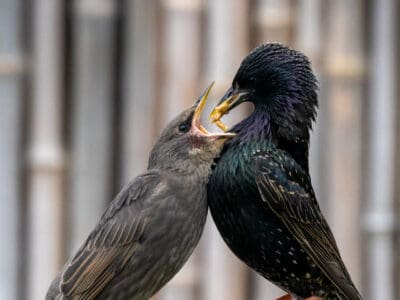
- Kingdom
- Animalia
- Phylum
- Chordata
- Grade
- Aves
- Society
- Passeriformes
- Family
- Tyrannidae
- Genus
- Sturnus
- Scientific Name
- Sturnus vulgaris
Fun Fact: European starlings are accomplished mimics, frequently copying songs or sounds of other birds and animals (frog calls, goats, cats), or even mechanical sounds and human speech!
The European Starling is 1 beautifully dazzling bird. During the winter season, there are lilliputian white spots covering its body simply when the summertime comes, they flash their night and glossy shades. They are sometimes considered ambitious and are very noisy when traveling in flocks. They are known to mimic other species and sing songs. […] Read More
European Wildcat

- Kingdom
- Animalia
- Phylum
- Chordata
- Class
- Mammalia
- Lodge
- Carnivora
- Family
- Felidae
- Genus
- Felis
- Scientific Proper name
- Felis catus silvestris
Fun Fact: A group of wild cats is called a destruction
The European wildcat's tail is near half of its torso." The European mutiny is the ancestor of the modern housecat. The small wildcat subspecies are native to Europe, mainly living in forests. Information technology is the size of a large housecat. Although it evolved 650,000 years ago, information technology was only discovered in the 18th century due […] Read More
Evening Bat
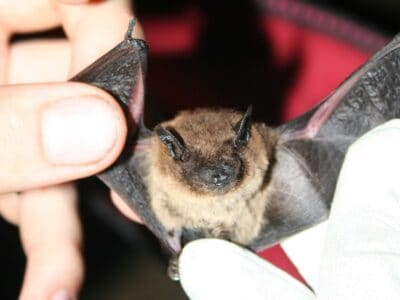
- Kingdom
- Animalia
- Phylum
- Chordata
- Class
- Mammalia
- Lodge
- Chiroptera
- Family unit
- Vespertilionidae
- Genus
- Nycticeius
- Scientific Name
- Nycticeius humeralis
Fun Fact: The evening bat is i of the few bats that regularly has twins
Reproduction in evening bats is a flake unusual and a bit pilus-raising. A female evening bat gives birth to twins whose total weight is half as much as hers. This is one of the largest babies to maternal size ratios in the animal kingdom and the largest among bats. Small-scale in size, this unassuming bat […] Read More
Evening Grosbeak
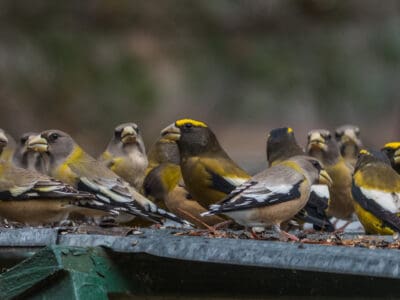
- Kingdom
- Animalia
- Phylum
- Chordata
- Class
- Aves
- Club
- Passeriformes
- Family
- Fringillidae
- Genus
- Hesperiphona
- Scientific Proper noun
- Hesperiphona vespertina
Fun Fact: They are friendly and non-aggressive to those in their species.
"Evening grosbeaks are common at backyard feeders." Summary The evening grosbeak (Hesperiphona vespertina) is a large, heavyset bird with a thick conical nib native to North America. It inhabits coniferous forests in Canada and the Northern United States and frequents much of the U.s.'s urban and suburban areas during the winter. Look to the tops […] Read More than
Executioner Wasp

- Kingdom
- Animalia
- Phylum
- Arthropoda
- Class
- Insecta
- Guild
- Hymenoptera
- Family
- Vespidae
- Genus
- Polistes
- Scientific Name
- Polistes carnifex
Fun Fact: The Executioner Wasp's sting is one of the nigh painful in the globe.
The Executioner Wasp's sting is one of the most painful in the earth. Summary The Executioner Wasp (Polistes carnifex) is a big wasp native to fundamental and Southward America. The wasp is one of the largest wasps in South America. It is most pop for its painful string, which is supposedly more painful than the […] Read More
Eyelash Viper
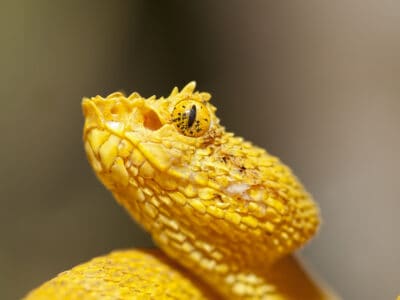
- Kingdom
- Animalia
- Phylum
- Chordata
- Class
- Reptilia
- Guild
- Squamata
- Family
- Viperidae
- Genus
- Bothriechis
- Scientific Name
- Bothriechis schlegelii
Fun Fact:
The eyelash viper, which is known by many names, has a distinct ready of scales above their eyes that look similar bold eyelashes. It comes in many dissimilar colors, making information technology attractive to the pet merchandise. It gives birth to live young, conveying along the eggs for half of the yr before they are born. […] Read More than
Popular Animals starting with E

Elephant
Spends around 22 hours a solar day eating!

Hawkeye
Has exceptional eyesight!
Newest Animals that Start with the Letter of the alphabet E
The almost recently added Animals that showtime with the letter E.


Elf Owl
The elf owl is the smallest and lightest owl in the globe

Egyptian Tortoise
The Egyptian tortoise is 1 of the smallest tortoise species in the world.

Animals That End With E,
Source: https://a-z-animals.com/animals/animals-that-start-with-e/
Posted by: bergeronabountich.blogspot.com


0 Response to "Animals That End With E"
Post a Comment